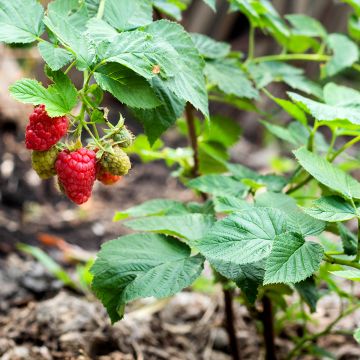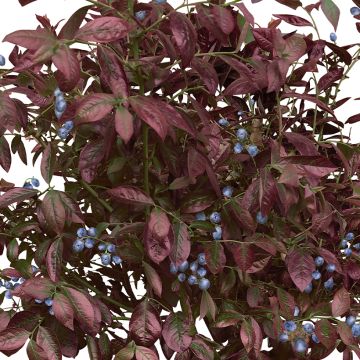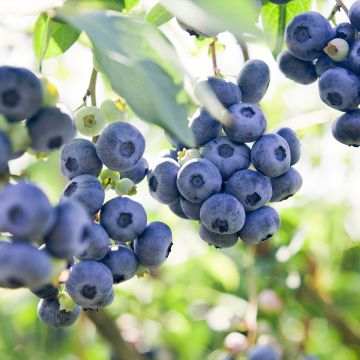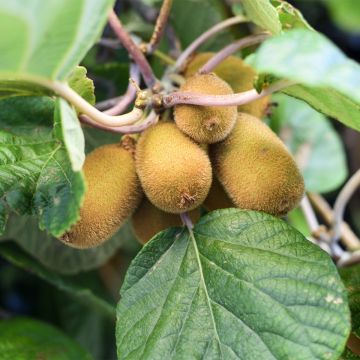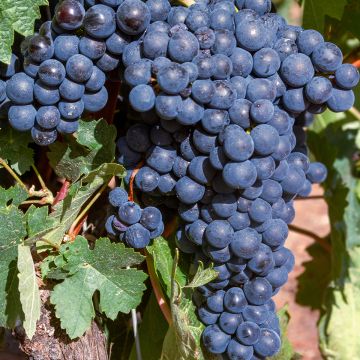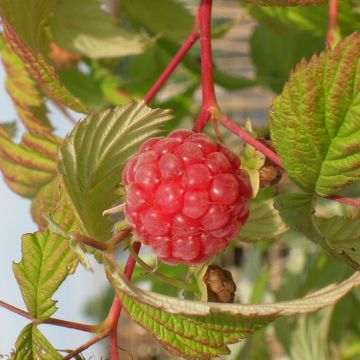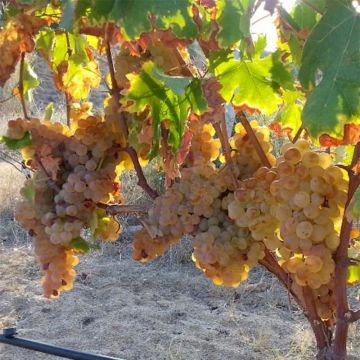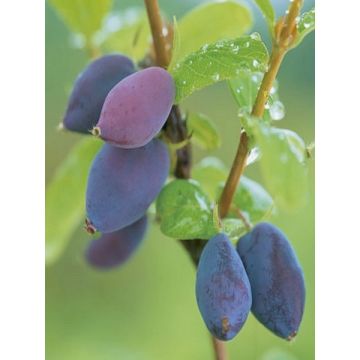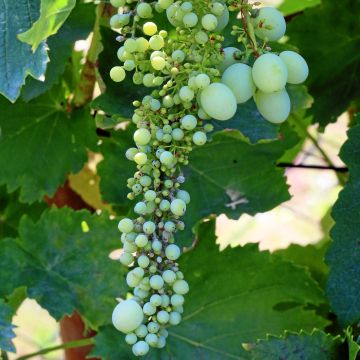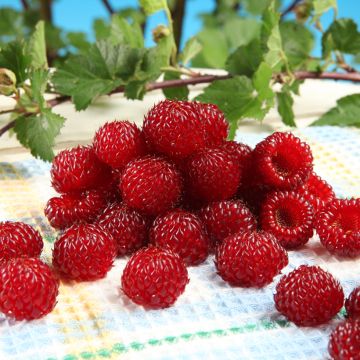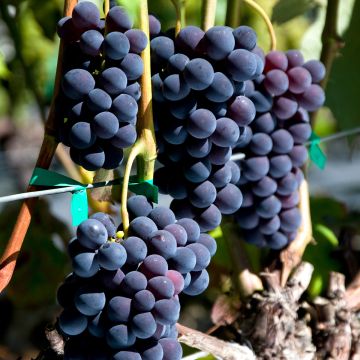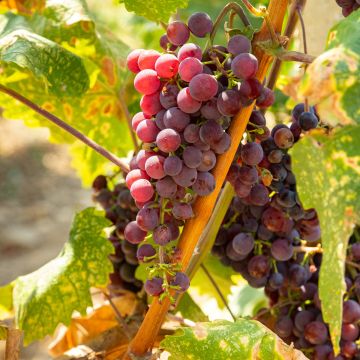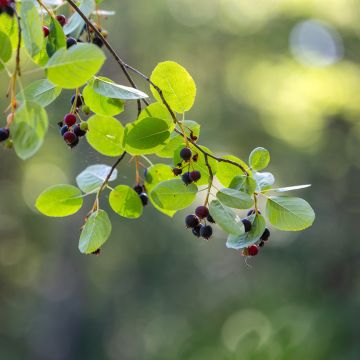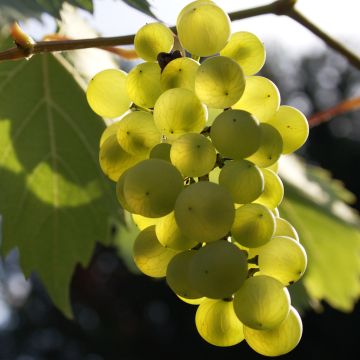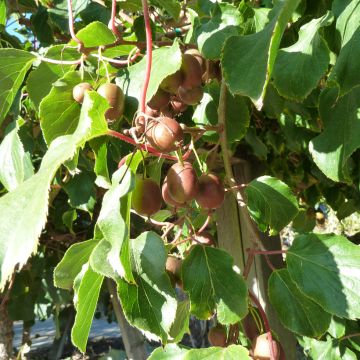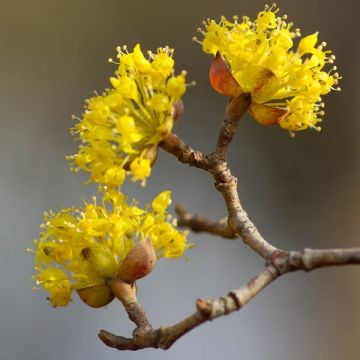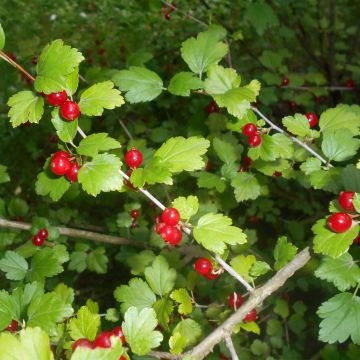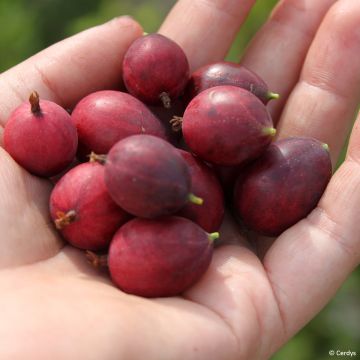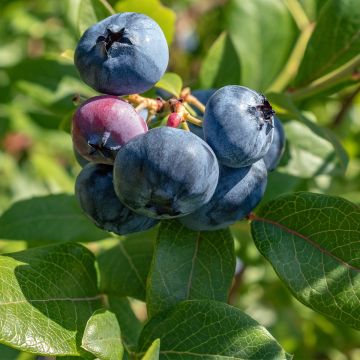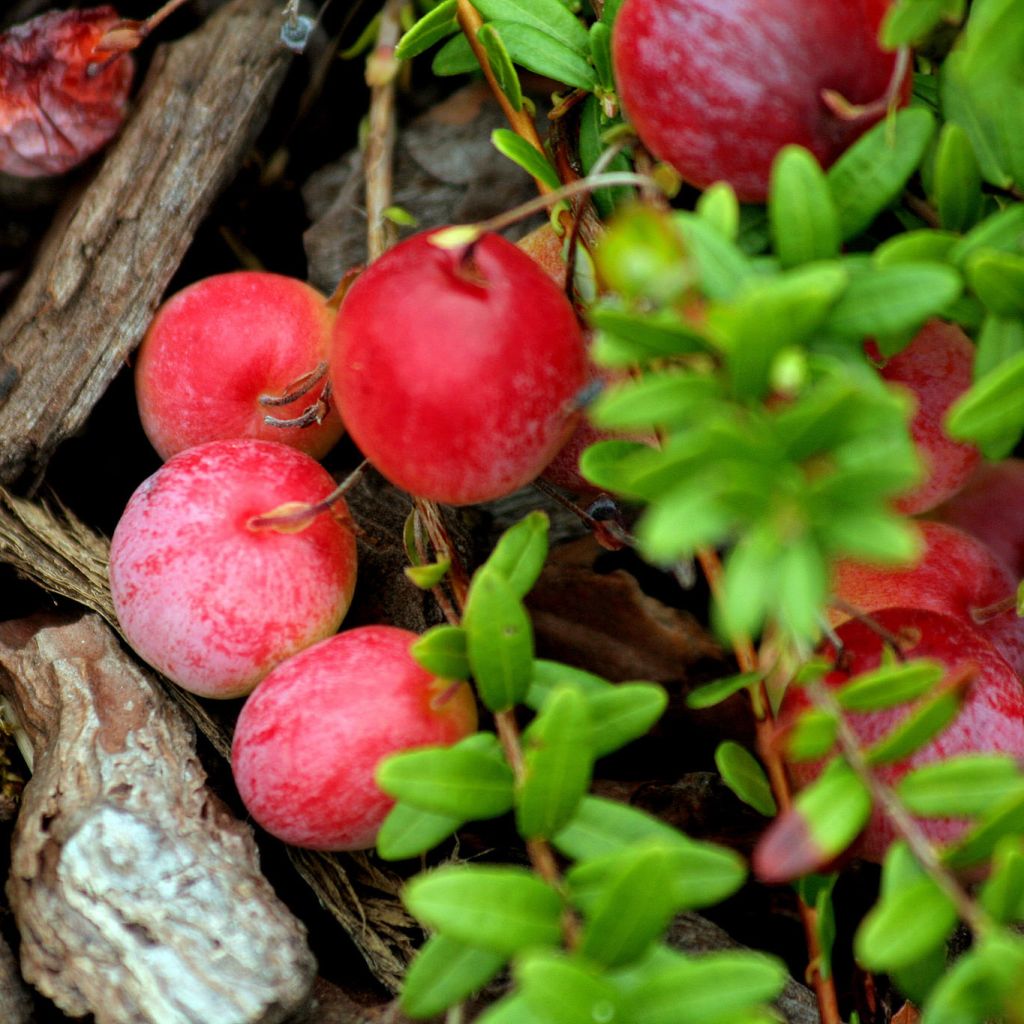

Vaccinium Early Black - Cranberry
Vaccinium Early Black - Cranberry
Vaccinium macrocarpon Early Black
Cranberry
This item cannot be shipped to the selected country
Delivery charge from €5.90
Delivery to Corse prohibited
More information
Schedule delivery date,
and select date in basket
This plant carries a 6 months recovery warranty
More information
We guarantee the quality of our plants for a full growing cycle, and will replace at our expense any plant that fails to recover under normal climatic and planting conditions.
From €5.90 for pickup delivery and €6.90 for home delivery
Express home delivery from €8.90.
Delivery to Corse prohibited: UE law prohibits the import of this plant from mainland France to Corse as part of the fight against Xylella fastidiosa. Please accept our sincere apologies.
More information

Description
The Cranberry (Vaccinium macrocarpon) Early Black is an early and productive variety, offering dark red berries that are good for storage. The Cranberry is a small groundcover bush that reaches a height of 30 cm (12in), and it thrives in acidic and moist soils. Enjoy the berries in juice, jams, jellies, or as an accompaniment to certain savory dishes. Plant ideally in autumn or any time of the year when there is no frost, for a harvest starting in September.
The Cranberry belongs to the Ericaceae family and the genus Vaccinium, like the blueberry. Naturally growing in North American bogs, it prefers acidic and moist soils. The Cranberry is a small ground cover bush that reaches a height of 30 cm (12in) and a width of 60 cm (24in), with a rather slow growth. It is very hardy, withstanding temperatures as low as -25°C (-13°F), and can live for several decades. Its ovate and pointed leaves are evergreen. The stems have the particularity of developing rooting stolons in the soil.
In summer, the Cranberry produces small pink flowers, followed by the formation of round berries measuring 2 cm (1in) in diameter. The berries turn red when ripe and have a tart taste. The Cranberry resembles the red currant, but they are two distinct species. Cranberries are harvested in autumn. Be patient: the first harvest occurs from the 4th year onwards. They are a fruit rich in vitamin C and antioxidants. Cranberries can be consumed in juice, jams, jellies, or sometimes in certain savoury dishes. They can be dried or frozen for longer storage.
In the garden, plant several Cranberry young plants to create a small edible hedge or incorporate Cranberries into beds with acidic soil, alongside rhododendrons, azaleas, hydrangeas, and heathers...
Report an error about the product description
Vaccinium Early Black - Cranberry in pictures
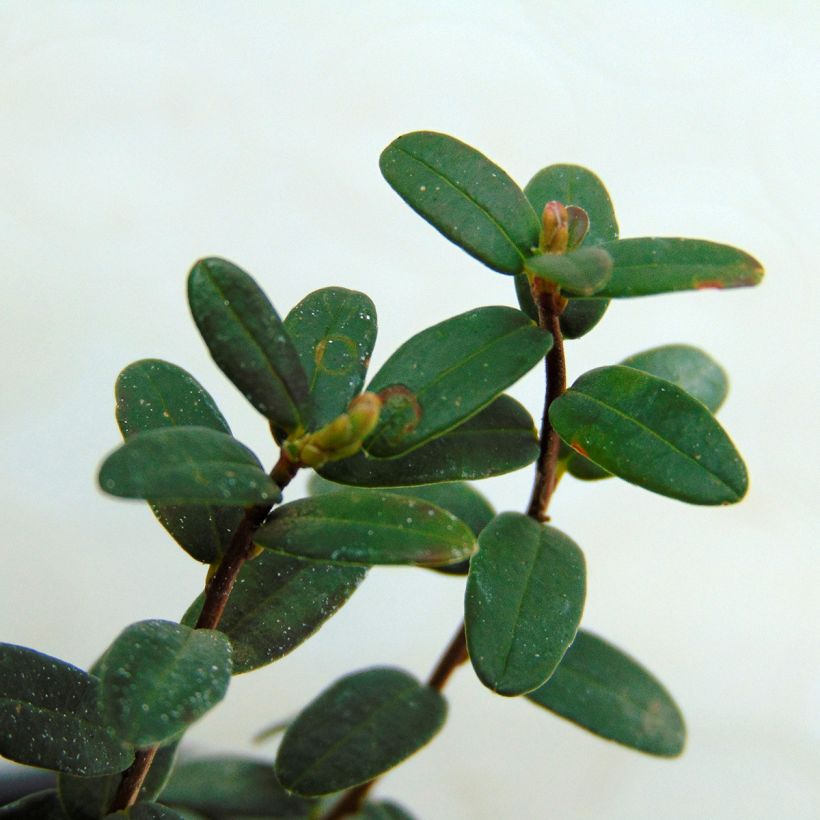

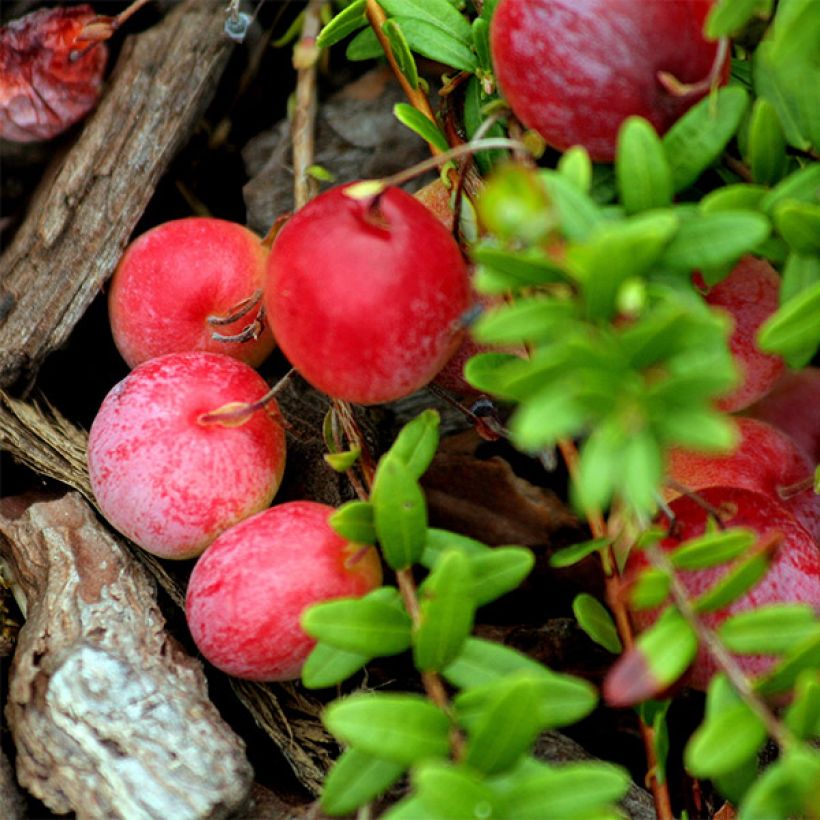

Plant habit
Fruit
Flowering
Foliage
Botanical data
Vaccinium
macrocarpon
Early Black
Ericaceae
Cranberry
North America
Other Berries A to Z
Planting and care
Planting Cranberries is ideally done in autumn or throughout the year when there is no frost. Choose a partially shaded location. Cranberries thrive in acidic (pH between 4 and 5) and moist soil. If you plant multiple plants, space them 60 cm (24in) apart. Dig a hole 50 to 60 cm (20 to 24in) deep and incorporate pure heath soil or a mixture of regular soil and turf, well-decomposed bark compost. Place the root ball, cover with soil, and firm it down. Water generously.
During cultivation, it is necessary to water regularly, including in winter. If possible, use non-calcareous water (e.g. rainwater). Mulch the base with shredded bark, straw, or fern leaves. In spring, annually apply some well-rotted compost on the surface.
Pot cultivation is possible, offering an interesting alternative if your soil is calcareous. Repot every 2 years.
Planting period
Intended location
Care
-
, onOrder confirmed
Reply from on Promesse de fleurs
Berries
Haven't found what you were looking for?
Hardiness is the lowest winter temperature a plant can endure without suffering serious damage or even dying. However, hardiness is affected by location (a sheltered area, such as a patio), protection (winter cover) and soil type (hardiness is improved by well-drained soil).

Photo Sharing Terms & Conditions
In order to encourage gardeners to interact and share their experiences, Promesse de fleurs offers various media enabling content to be uploaded onto its Site - in particular via the ‘Photo sharing’ module.
The User agrees to refrain from:
- Posting any content that is illegal, prejudicial, insulting, racist, inciteful to hatred, revisionist, contrary to public decency, that infringes on privacy or on the privacy rights of third parties, in particular the publicity rights of persons and goods, intellectual property rights, or the right to privacy.
- Submitting content on behalf of a third party;
- Impersonate the identity of a third party and/or publish any personal information about a third party;
In general, the User undertakes to refrain from any unethical behaviour.
All Content (in particular text, comments, files, images, photos, videos, creative works, etc.), which may be subject to property or intellectual property rights, image or other private rights, shall remain the property of the User, subject to the limited rights granted by the terms of the licence granted by Promesse de fleurs as stated below. Users are at liberty to publish or not to publish such Content on the Site, notably via the ‘Photo Sharing’ facility, and accept that this Content shall be made public and freely accessible, notably on the Internet.
Users further acknowledge, undertake to have ,and guarantee that they hold all necessary rights and permissions to publish such material on the Site, in particular with regard to the legislation in force pertaining to any privacy, property, intellectual property, image, or contractual rights, or rights of any other nature. By publishing such Content on the Site, Users acknowledge accepting full liability as publishers of the Content within the meaning of the law, and grant Promesse de fleurs, free of charge, an inclusive, worldwide licence for the said Content for the entire duration of its publication, including all reproduction, representation, up/downloading, displaying, performing, transmission, and storage rights.
Users also grant permission for their name to be linked to the Content and accept that this link may not always be made available.
By engaging in posting material, Users consent to their Content becoming automatically accessible on the Internet, in particular on other sites and/or blogs and/or web pages of the Promesse de fleurs site, including in particular social pages and the Promesse de fleurs catalogue.
Users may secure the removal of entrusted content free of charge by issuing a simple request via our contact form.
The flowering period indicated on our website applies to countries and regions located in USDA zone 8 (France, the United Kingdom, Ireland, the Netherlands, etc.)
It will vary according to where you live:
- In zones 9 to 10 (Italy, Spain, Greece, etc.), flowering will occur about 2 to 4 weeks earlier.
- In zones 6 to 7 (Germany, Poland, Slovenia, and lower mountainous regions), flowering will be delayed by 2 to 3 weeks.
- In zone 5 (Central Europe, Scandinavia), blooming will be delayed by 3 to 5 weeks.
In temperate climates, pruning of spring-flowering shrubs (forsythia, spireas, etc.) should be done just after flowering.
Pruning of summer-flowering shrubs (Indian Lilac, Perovskia, etc.) can be done in winter or spring.
In cold regions as well as with frost-sensitive plants, avoid pruning too early when severe frosts may still occur.
The planting period indicated on our website applies to countries and regions located in USDA zone 8 (France, United Kingdom, Ireland, Netherlands).
It will vary according to where you live:
- In Mediterranean zones (Marseille, Madrid, Milan, etc.), autumn and winter are the best planting periods.
- In continental zones (Strasbourg, Munich, Vienna, etc.), delay planting by 2 to 3 weeks in spring and bring it forward by 2 to 4 weeks in autumn.
- In mountainous regions (the Alps, Pyrenees, Carpathians, etc.), it is best to plant in late spring (May-June) or late summer (August-September).
The harvesting period indicated on our website applies to countries and regions in USDA zone 8 (France, England, Ireland, the Netherlands).
In colder areas (Scandinavia, Poland, Austria...) fruit and vegetable harvests are likely to be delayed by 3-4 weeks.
In warmer areas (Italy, Spain, Greece, etc.), harvesting will probably take place earlier, depending on weather conditions.
The sowing periods indicated on our website apply to countries and regions within USDA Zone 8 (France, UK, Ireland, Netherlands).
In colder areas (Scandinavia, Poland, Austria...), delay any outdoor sowing by 3-4 weeks, or sow under glass.
In warmer climes (Italy, Spain, Greece, etc.), bring outdoor sowing forward by a few weeks.

































